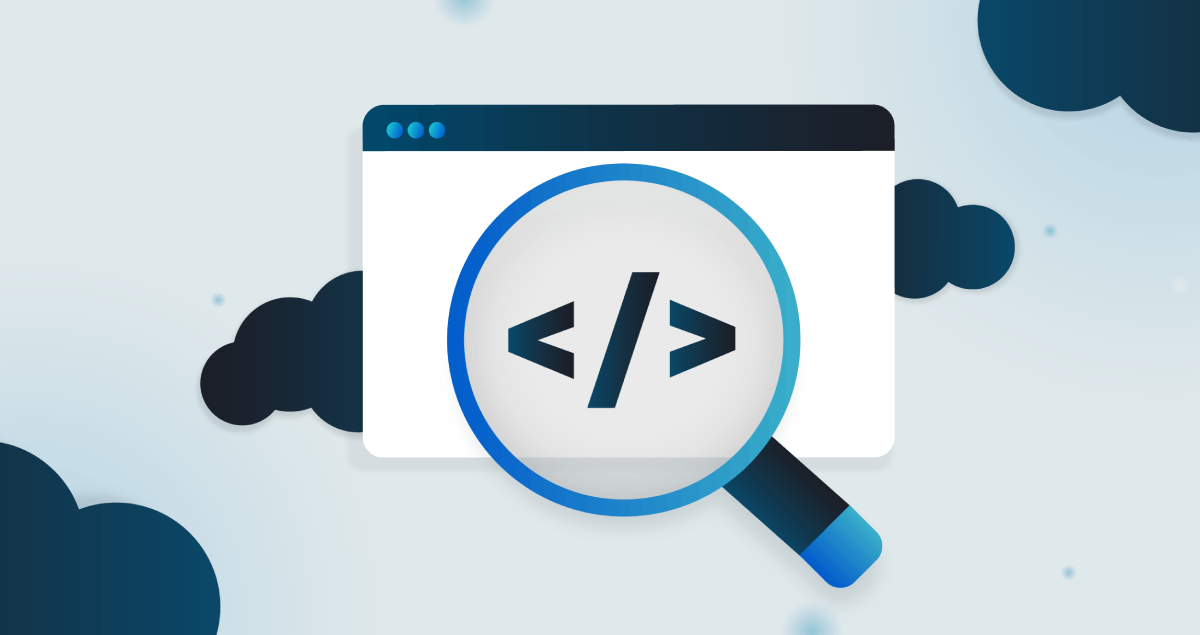Static analysis is useful for finding vulnerabilities and code violations across your codebase. It then generates reports where potential issues are detected, such as SQL injections in legacy files or hardcoded secrets. But then what?
While static analysis points out what’s wrong, it’s not always helpful when it comes to what to do about it. Secure code doesn’t come from detection alone, but rather from understanding and mitigating the underlying issues.

What Is Static Analysis of Code?
If you’re new to the term, static analysis is a method of examining code without executing it. When used to identify security vulnerabilities before an application runs, it’s referred to as Static Application Security Testing, or SAST.
Unlike dynamic analysis, static analysis checks the code before running it. A static code analysis tool typically parses your source code into an abstract syntax tree (AST) so it can analyze its structure and identify potential issues.
It helps to improve code quality and ensure compliance with coding guidelines, along with finding security vulnerabilities that include:
-
SQL injection
-
Cross-site scripting (XSS)
-
Hardcoded credentials
-
Input validation issues
The idea is to catch issues early in the software development lifecycle (SDLC), well before your code hits production.
Static analysis works directly on the codebase, making it useful for integration into development workflows. Also, many tools support CI/CD integration and IDE plugins, helping developers to find issues as they write code.
Static Analysis vs. Dynamic Analysis
Static analysis helps identify issues early, but it’s limited to what it can see in code. Dynamic analysis, on the other hand, tests code by running it in a real or simulated environment.
Developers can check how the application behaves during execution, finding security vulnerabilities and errors that only appear at runtime.
Dynamic analysis helps to identify issues such as:
-
Memory leaks
-
Race conditions
-
Runtime errors
-
Performance issues
It shows how the application behaves in real time, including interactions between components that static tools can’t predict. Sure, it’s more resource-intensive, but working with both dynamic and static analysis gives you a more complete view of your application’s security.
The Benefits of Static Analysis
When used correctly, static analysis delivers value at every stage of development, not just for security, but also improves how code is written in general.
For many programming languages, static analyzers provide continuous feedback as developers write code, particularly when integrated into workflows.
Tools like the SecureFlag Analyzer for VS Code complement this by providing instant secure coding guidance directly in the IDE.
Static analysis also allows teams to monitor the health of the entire code base and use better approaches to maintain it. However, it’s important to note that most static analysis tools can find issues in the code, but typically do not provide automatic fixes, requiring developers to resolve them manually.
Early Detection
Fixing a vulnerability at the source saves time and money compared to patching it post-release. Static analysis identifies issues such as coding errors while the developer is still working on the code, making remediation faster and more efficient.
Automated Feedback
As static analysis runs automatically in your pipeline, it offers feedback and consistent enforcement of secure coding standards and rules, without needing manual reviews every time. It also reduces the time spent on debugging and maintenance.
Supports Compliance
Whether you’re aiming to meet PCI DSS, HIPAA, ISO 27001, or other security standards, static analysis helps demonstrate that security checks and coding guidelines are being applied consistently throughout the SDLC.
Builds Security Awareness
Over time, developers start to recognize recurring patterns and avoid common mistakes, especially when scan results are combined with practical secure coding training.
Junior developers, in particular, benefit from increased security awareness, as they receive early feedback on best practices and adherence to coding standards.
Reviewing scan results alongside real-life examples helps all team members understand how to apply secure coding best practices in different scenarios, which improves code quality and brings consistency across the codebase.
The Limitations of Static Analysis
Relying on static analysis alone often leads to frustration, delays, and inconsistent results. It may miss potential issues or keep reporting false positives, depending on how it is configured.
According to OWASP, many types of security vulnerabilities can be hard to find automatically, such as logic bugs, authentication problems, access control issues, and insecure use of cryptography.
Static analysis tools can be good at detecting issues with clear, traceable causes, such as when user input flows toward dangerous functionalities, making them effective at finding injection flaws or buffer overflow vulnerabilities.
However, they are less effective at identifying logic errors or more complex bugs. It’s also important to note that their accuracy can vary depending on how these tools are configured and the complexity of the codebase.
False Positives
Static analysis tools can sometimes report issues that aren’t actual vulnerabilities. This typically happens when the tool can’t verify the flow or safety of data within the application, particularly when external systems or closed-source components are involved.
Without access to that underlying code, the tool is unable to determine whether data remains secure throughout its lifecycle, often resulting in false positives.
Also, most teams have experienced “alert fatigue.” When every scan raises dozens of issues in the code, it becomes difficult to know what should be prioritized.
Missing Context
Scan results from analyzing program code can be vague. Telling a developer that “CWE-89: Potential SQL Injection at line 37” is not the same as letting them experience the impact firsthand, to see how the flaw could be exploited, and guiding them step-by-step to fix it.
Compilation Challenges
Many static analysis tools struggle to analyze code that can’t be compiled. Analysts often can’t compile code because they don’t have the necessary libraries, complete compilation instructions, all the required code, and so on.
Recurring Vulnerabilities
Even when issues get fixed, the same patterns can reappear in future code. That’s because most SAST tools don’t teach secure coding; they just show insecure code.
Static Analysis Techniques
Static analysis works by using key techniques to inspect code to identify security vulnerabilities, coding errors, and opportunities to improve code quality, all without executing the code.
Developers can detect potential issues early in the development process, reducing the risk of bugs and vulnerabilities making it into production.
Two of these techniques are
-
Data Flow Analysis: Tracks how data moves through code, where it’s created, changed, and used. It helps developers identify security flaws such as data leakage, improper input validation, or unauthorized data access.
-
Control Flow Graphs (CFGs): A CFG maps out all possible execution paths in the code. Developers can better understand the logic and structure of their code, making it easier to identify security vulnerabilities and improve code quality.
Best Practices for Static Analysis
To get the most out of static analysis, it needs to be part of a broader, developer-first security approach.
Integrating static analysis tools directly into developers’ IDEs provides instant feedback, code fix suggestions, and workflow integration, which improves developer security skills.
1. Integrate Early and Often
Start scanning as early in the development lifecycle as possible. Use pre-commit hooks, integrate into pull requests, and don’t wait for staging or production builds.
2. Customize Rules to Fit Your Codebase
Customizing your static analysis tool to enforce your organization’s coding style and rules ensures it aligns with what’s expected and improves code quality and consistency.
It’s also possible to configure static analysis to target specific types of issues, such as security vulnerabilities or critical errors, to get more relevant results.
3. Triage and Prioritize
To decide what to fix first, use severity ratings, CWE mappings, and look at the business impact. Combining static analysis tools with a threat modeling approach helps to focus on what’s most important.
4. Don’t Rely on Static Analysis Alone
Combine it with DAST, dependency scanning, and code reviews. Each method covers different blind spots, and together they form a more complete picture.
5. Invest in Developer Training
Giving developers context and guidance turns scan results into learning opportunities. This training is valuable for both newer developers and those more advanced. It helps them quickly learn best practices and upskill in writing secure code. And what better way to do this than with SecureFlag’s hands-on labs and learning paths.
The Role of SARIF
SARIF (Static Analysis Results Interchange Format) is an open standard for sharing results from static analysis tools. It’s like a universal language that makes it easier for platforms and tools to exchange data.
Why does this matter? Not all security tools use the same output formats, which makes it hard to consolidate or act on results in a consistent way.
With SARIF, tools like Fortify and Veracode can export their findings in a structured way that other systems (like SecureFlag) can understand and use.
From Vulnerability to Remediation with SecureFlag
Integrate your SAST results directly with SecureFlag to turn scan findings into practical, interactive training.
Instead of leaving vulnerabilities in a backlog, turn them into targeted upskilling moments.
How It Works
-
Upload SARIF scan results from your tool of choice.
-
SecureFlag parses the file and extracts key data: CWEs, severity, file locations, and languages.
-
Based on this, it assigns relevant interactive labs to your team.
-
Developers complete labs tied to the actual vulnerabilities they’re facing.
Whether it’s XSS in JavaScript, SQL injection in Python, or insecure deserialization in Java, the training is context-aware, language-specific, and aligned to your tech stack.
No more searching Stack Overflow or clicking through vague documentation. Only focused, interactive practice designed to help your team fix the problems they’re facing.
Turning Static Analysis into Secure Code
As we’ve seen, static analysis without developer training identifies issues, but it doesn’t explain what they mean or how to fix them.
By combining static analysis with hands-on, targeted education, SecureFlag helps teams:
-
Reduce time-to-fix.
-
Understand why an issue occurred.
-
Build lasting, secure coding habits.
-
Move from reactive patching to proactive prevention.
And with support for a wide range of tools and languages, and the ability to extend to new scanners on request, the SARIF integration keeps developers learning, no matter what stack they’re working in.


